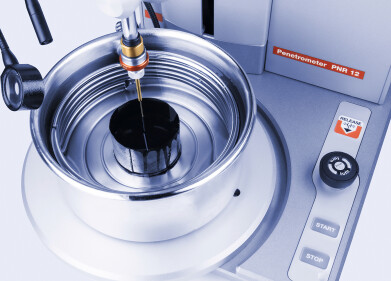Measurement and testing
Non-Contact Temperature Monitoring in Hazardous Areas
Apr 14 2016
All models from Fluke Process Instruments’ (Germany) versatile MI3 infrared sensor series are now also available as intrinsically safe versions for use in hazardous environments. The intelligent miniature sensors are fully ATEX and IECEx certified for use in Zones 1 and 2 (gas) and Zones 21 and 22 (dust). The manufacturer supplies a complete intrinsically safe package including the sensor, a communication box, and an Ex power supply. All three components are IP65-rated, and each can be easily exchanged in the field without re-calibration of the entire system. One or two intrinsically safe MI3 sensing heads can be powered by one power supply. The sensor cables can be up to 30 m long in total, providing high flexibility for setting up safe monitoring scenarios.
Featuring a stainless steel housing with integrated electronics, the rugged MI3 pyrometer is the smallest stand-alone digital infrared temperature sensor for fixed installation on the market today. The MI3 series comprises pyrometers for various spectral ranges and applications, including the 1M and 2M short wavelength models with an excellent 100:1 resolution and 10 ms response time, which are suitable for monitoring temperatures up to +1,800 °C. Each intrinsically safe MI3 sensing head is labeled with the Ex i certification. In the case of the MI3100, this also covers the laser sighting function for easy positioning and aiming. MI3 sensors have excellent EMC characteristics and can be used in ambient temperatures up to +180 °C. Communication boxes are available with RS485, Modbus, Profibus, Ethernet, and Profinet IO interfaces and with four galvanically isolated analogue outputs. Automatic head detection and digital communication between sensor and box enable plug and play.
The ATEX and IECEx certifications open up many additional areas for the MI3 series, for example steel industry processes using hydrogen atmospheres such as galvanising, annealing, plating, and coating; hydrogen reduction in the solar industry; petrochemical applications such as sulfur recovery and monitoring boilers, reactors, pipes, and flare control; manufacture and storage of various chemical and agricultural products such as vinyl, fertiliser, starch, alcohols, and flour; fire detection; monitoring mining equipment and conveyors; hazardous waste disposal; and sewage treatment.
Digital Edition
PIN 25.5 Oct/Nov 2024
November 2024
Analytical Instrumentation - Picturing Viscosity – How Can a Viscometer or a Rheometer Benefit You? - Sustainable Grease Formulations: Evaluating Key Performance Parameters and Testing Method...
View all digital editions
Events
Jan 20 2025 San Diego, CA, USA
Jan 22 2025 Tokyo, Japan
Jan 25 2025 San Diego, CA, USA
SPE Hydraulic Fracturing Technology Conference and Exhibition
Feb 04 2025 The Woodlands, TX, USA
Feb 05 2025 Guangzhou, China



















